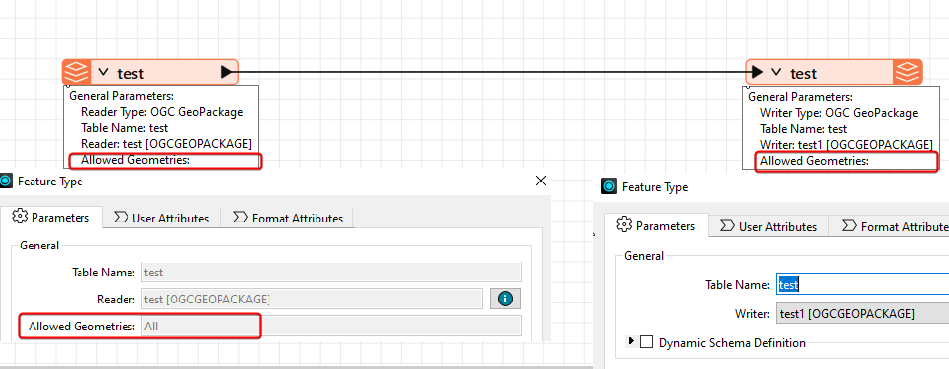Introducing FME 2024.1! This latest release focuses on significantly improving workflow efficiency. With enhanced capabilities for API interactions and JSON visualization, you can streamline complex tasks and reduce manual efforts. The update also brings a refreshed user interface for FME Flow, making it more intuitive and user-friendly. Upgrade to FME 2024.1 to experience these valuable enhancements that boost productivity and precision in your data workflows.
Feature Highlights
New OpenAPICaller Transformer: The new OpenAPICaller enables you to directly import OpenAPI specifications to automatically configure your transformer to call your endpoint of choice. The OpenAPICaller also introduces a way for you to visualize your JSON in a tree format, helping you fragment your JSON body and output it into features.
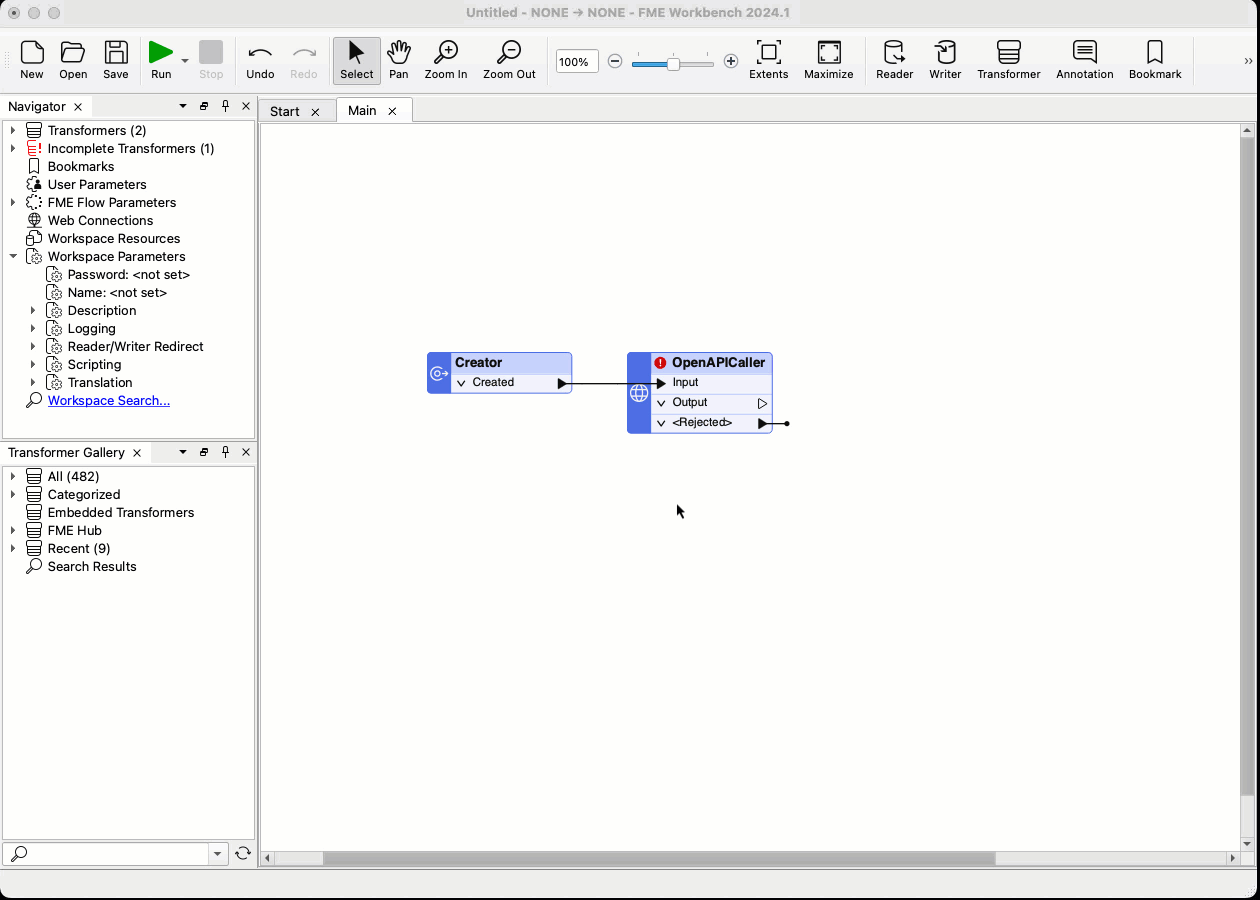
Preview and Test: Preview URLs, test requests, and view responses directly within HTTPCaller and OpenAPICaller Parameters dialog. This integrated approach reduces setup time, provides immediate feedback, and simplifies the process of configuring and analyzing HTTP requests.
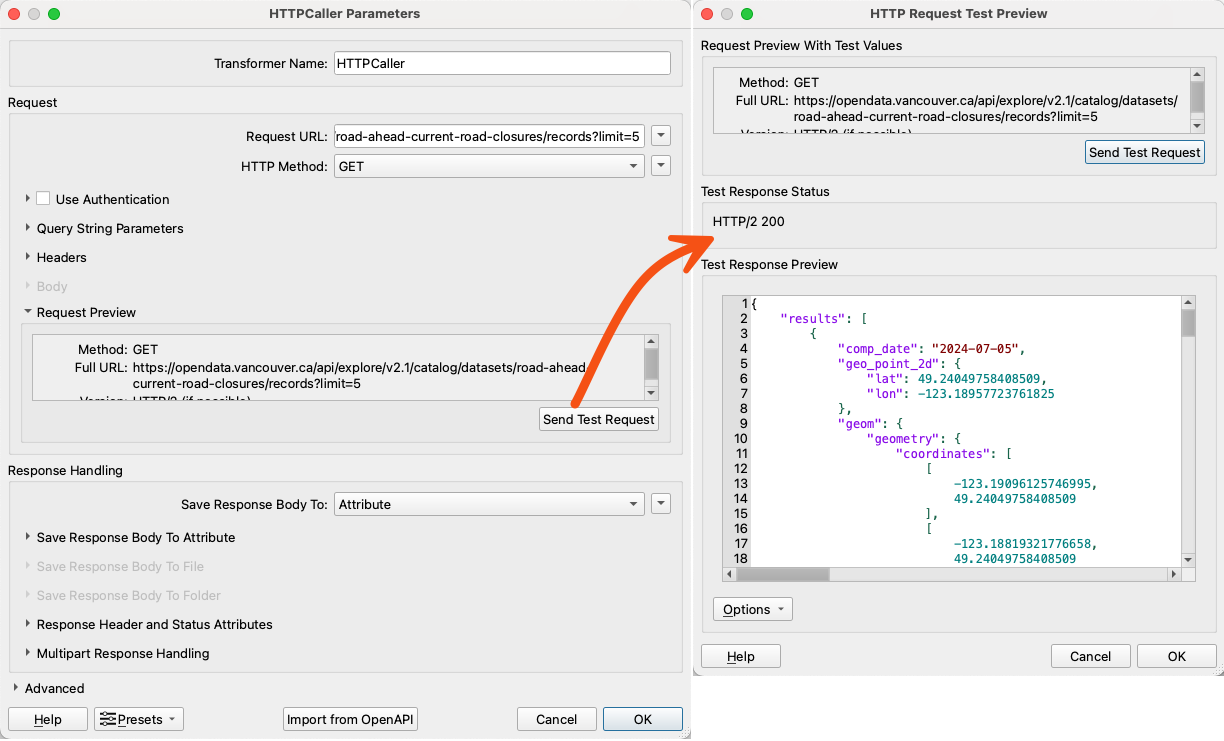
Additional Enhancements
Parameter Annotations within FME Form: Enhance your ability to document and understand your data workflows by allowing context-specific Annotations directly within Parameter Editor dialogs, ensuring that relevant information is always visible without cluttering the workspace.
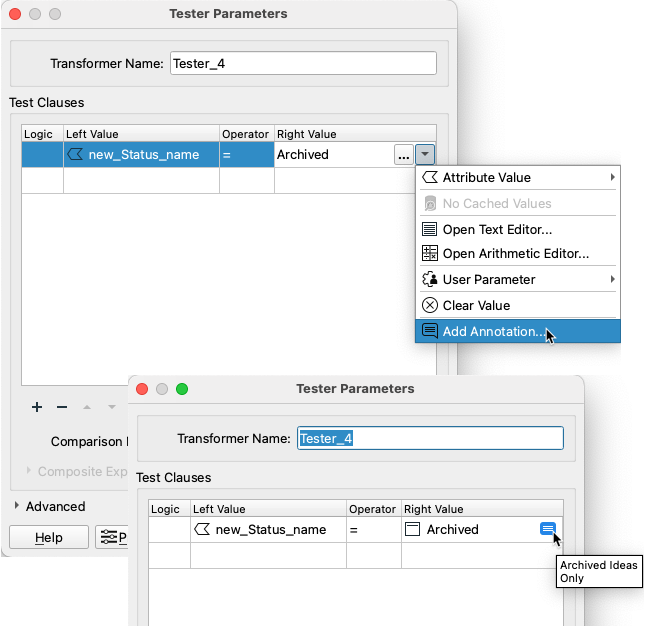
Improved Quick Add: Easily find and select the most relevant transformers, readers, and writers for your data integration tasks with new filtering options, sort options, and an updated information hierarchy.
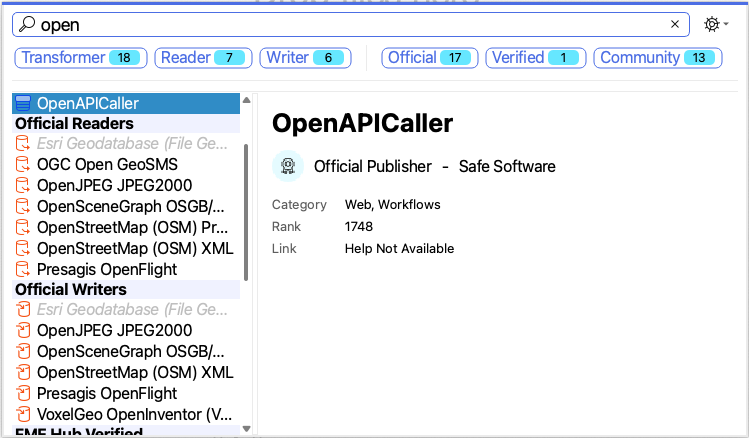
New IFC Reader: The updated IFC reader now supports the latest IFC versions, making it easier to read and translate IFC data to GIS. The new simplified relational view improves readability and data management. Enhanced support for new feature types and properties in IFC 4.3 and above, along with better spatial reference system compatibility, ensures smoother integration with GIS applications.
New DuckDB Reader: FME now supports DuckDB, an in-memory, columnar SQL database management system designed for analytical workloads. This new integration includes a native DuckDB reader and the ability to submit queries to DuckDB via the SQLExecutor transformer. This allows you to read data from DuckDB databases and efficiently query cloud-native data formats, such as Parquet files on S3. Learn more at duckdb.org
Enhanced GeoJSON support in the Creator Transformer: Geometry integration is now streamlined using the Geometry published parameter with FME Flow, and a redesigned Coordinates tab in the Creator transformer makes it easier to input coordinates from FME Data Inspector, log files, or in your custom formats, including matching brace sets for lines and polygons.
FME Flow Dashboard: Replacing the FME Flow home page, the new dashboard is your central hub. It focuses on actionable information, quick access to frequently used tools, and provides an overview of FME Flow jobs and automations.
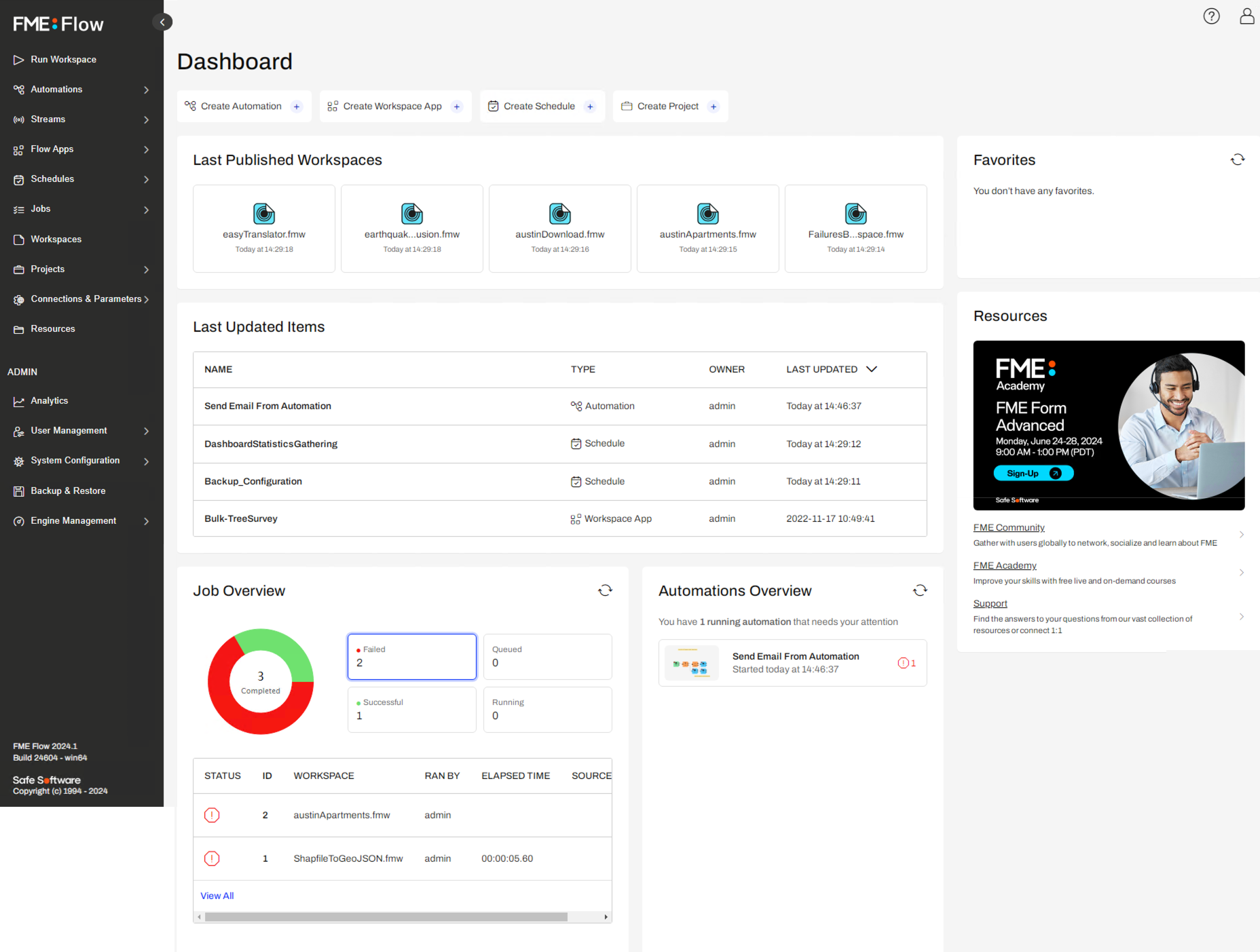
Simplified FME Flow Hosted Upgrade: Upgrade FME Flow instances running on Flow Hosted easily, without any downtime and with limited configuration changes required. New clone functionality allows you to clone all settings and configurations from an existing FME Flow Hosted instance to a new one, simplifying the upgrade process. New URL modification capability allows you to change the URL of running or paused FME Flow Hosted instances, offering greater control over instance management.
Surface Model Transformers: New "Breakline Method" parameter in the TINGenerator, DEMGenerator, and RasterDEMGenerator transformers provides you with the flexibility to choose between preserving the Delaunay condition or maintaining breakline edges.














